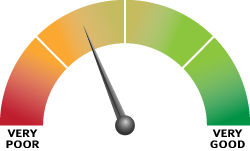
Land-based run-off pressure on the Great Barrier Reef
You are viewing an archived copy of the 2017 report.
Key finding
Declining marine water quality is one of the most significant threats to the reef however agricultural practices are improving, resulting in reductions in land-based run-off entering the region.
Great Barrier Reef marine park area (information applies statewide, map locations are for reference only)
Varying land uses and land management practices influence the quality and amount of freshwater that flows into the Reef lagoon. Inshore areas are particularly at risk from poor water quality, especially in central and southern areas.
Sediments and nutrients continue to enter the Great Barrier Reef ecosystem at greatly enhanced levels compared to those prior to European settlement. Modelling indicates agricultural run-off introduced at least 12,114kg of herbicides annually into the region.
Declining marine water quality, influenced by land-based run-off, is one of the most significant threats to the long-term health and resilience of the Great Barrier Reef.
Although agricultural practices are improving and there have been some reductions in the amount of nutrients, sediments and pesticides entering the region, there is likely to be a significant lag before water quality improvements are measurable.
Marine debris, from onshore and offshore sources, continues to affect the ecosystem. This is particularly worrying for species of conservation concern. Water quality declines and marine debris are likely to diminish the region’s natural beauty.
Ecosystem declines from poor water quality also affect reef-dependent industries. For example, outbreaks of crown-of-thorns starfish can affect the viability of tourism operations.
More information:
Indicator: Land-based run-off
Land-based runoff pressure on the Great Barrier Reef Marine Park Area as reported in the Great Barrier Reef Outlook Report 2014.

See also: Estuarine and marine ecosystems assessment summary.
- Previous Direct use pressure on the Great Barrier Reef
- Next Crown-of-thorns starfish pressure on the Great Barrier Reef

